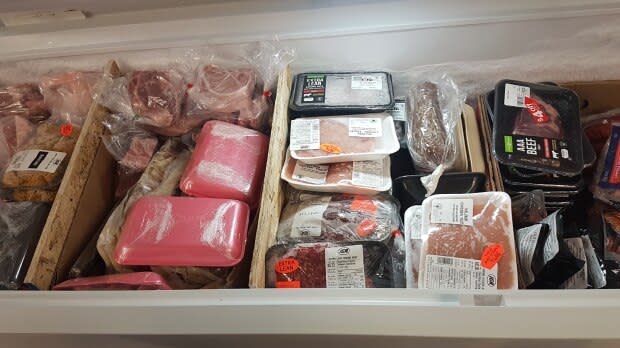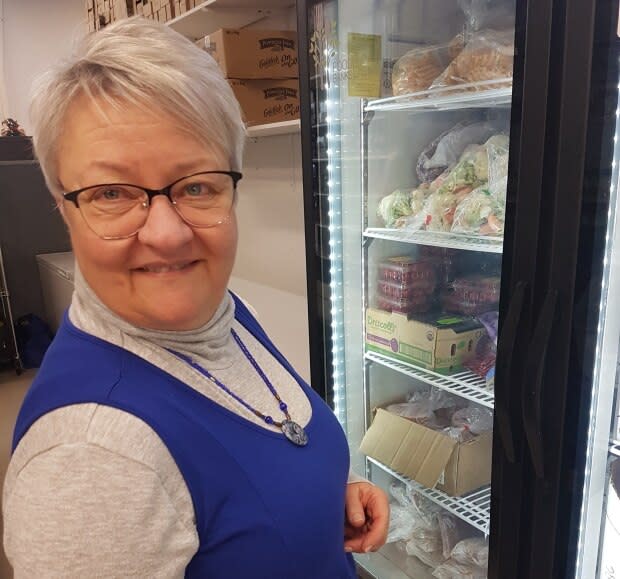From 5,000 to 250,000 pounds of food, how an Okanagan food bank became a hub
Since 2015, the Lake Country Food Bank in the Central Okanagan has grown from distributing 5,000 pounds of food per year to more than 250,000 pounds a year.
Joy Haxton, manager of the food bank, attributes the increase to its food recovery program.
The organization has always been involved in collecting leftover food from local orchards and farmers. But it grew more serious about it when, in 2015, it got a larger building with three large walk-in coolers in the basement which can store large amounts of perishable food.
The coolers allowed the food bank to partner with major grocery stores, such as Sysco and Save-On-Foods, to take leftover food, which is still in good condition — and freeze it.
"These are items that would have gone into the landfill, but as part of the food recovery program, we take them at the best-before date and freeze them and then they go out to clients," Haxton said.

This includes dairy, meat and produce.
"So far this year, in 10 months, we recovered 250,000 pounds," Haxton told Daybreak South's David French.
By the end of December, she estimates, the food bank, which is run by 65 volunteers, will hit 336,000 pounds. of food.
Distribution
With such a high intake of food at the food bank in Lake Country, which has a population of 13,000, the organization is now a major distribution centre that supplies food banks in 12 other communities throughout the southern Interior.
With the help of a grant from Food Banks B.C., it uses refrigerated vans to transport the food long distances. Cherryville, which is 80 kilometres away from the food bank, is one of the small communities it has adopted.

"Because we had extra food items, and they didn't have any, no grocery stores et cetera, we said we would guarantee that they had food for their families," Haxton said.
The amount of food it receives is now so high it also provides food to 35 charities and local organizations, such as the Women's Shelter and the Boys and Girls Club.
"You end up finding organizations you don't just give it out to your clients, because the volume is just too large," said Haxton.
'Game changer'
The shift to a food recovery program is not unique to Lake Country's food bank, said Laura Lansink, executive director of Food Banks BC.

In 2017, the province gave Food Banks BC $10 million, 95 per cent of which was used to buy equipment to handle perishable food at food banks throughout the province.
"[It's an] absolute game changer. Now that the food banks are able to participate in perishable food recovery, what it means is they have such an abundance that food banks started saying to [people] 'you can come more often'," said Lansink.
Food recovery has a long way to go still, but she said it's improved a lot in the past two years.
Food recovery challenges
The biggest challenge the Lake Country Food Bank faces is getting financial support for food recovery, said Haxton.
"When we run our vehicles there isn't any gas money, there isn't any insurance money. There isn't any extra funding for that."


